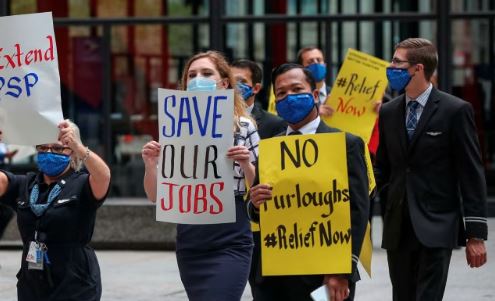The United States labor market showed signs of softening as initial jobless claims fell modestly by 2,000 to 231,000 in the week ending August 24, according to the latest report from the United States Department of Labor. This decline brings the claims slightly below the market expectation of 231,000, but they remain above the average of 226,000 claims observed in the first half of 2024, reflecting ongoing challenges in re-employment for laid-off workers.
The decline in jobless claims was observed across several key states, with Florida seeing a decrease of 1,496 claims, Texas down by 1,394, and California experiencing a reduction of 635 claims. However, some states reported significant increases, notably New York with a rise of 2,695 claims, Michigan with an additional 1,333 claims, and North Dakota with 1,007 new claims.
On a non-seasonally adjusted basis, the 4-week moving average of initial jobless claims declined by 4,750 to 231,500, compared to 236,250 in the previous week. This trend suggests a slight easing of labor market pressures, although the broader picture indicates that the market remains under strain.
The current state of the labor market is seen as a reflection of the Federal Reserve’s stringent monetary policies, which have tightened financial conditions across the broader economy. As businesses grapple with these conditions, re-employment opportunities for laid-off workers have become increasingly scarce, contributing to the elevated levels of unemployment.
The combination of high unemployment and stagnant wage growth is raising concerns about the US economic outlook, with potential downside risks to growth becoming more pronounced. These factors are fueling speculation that the Federal Open Market Committee (FOMC) may consider a rate cut in the near term to stabilize the economy.
Indeed, market sentiment, as indicated by the CME FedWatch Tool, suggests a 67.5% probability that the Fed will lower the key interest rate by 25 basis points at its upcoming monetary policy meeting in September. Such a move would aim to strike a balance between curbing inflationary pressures and supporting economic growth amidst the current labor market challenges. As the labor market continues to navigate these complexities, the Fed’s decisions in the coming weeks will be closely watched, with significant implications for the future trajectory of the US economy.















